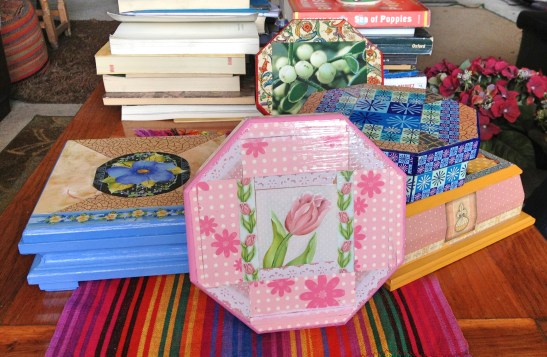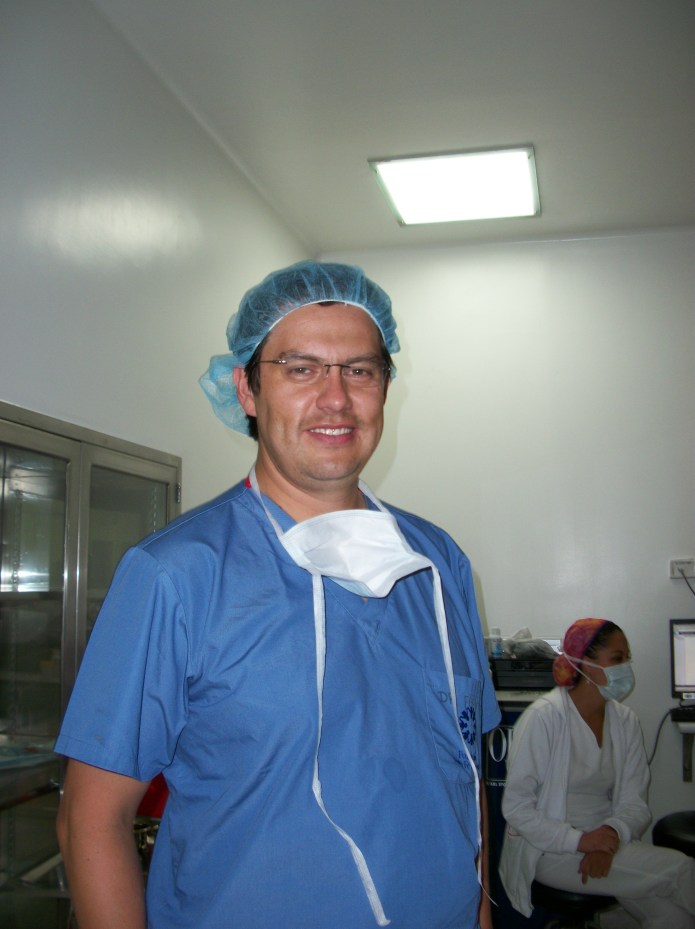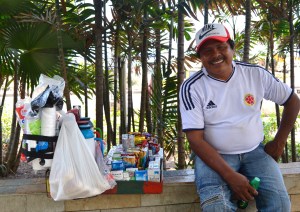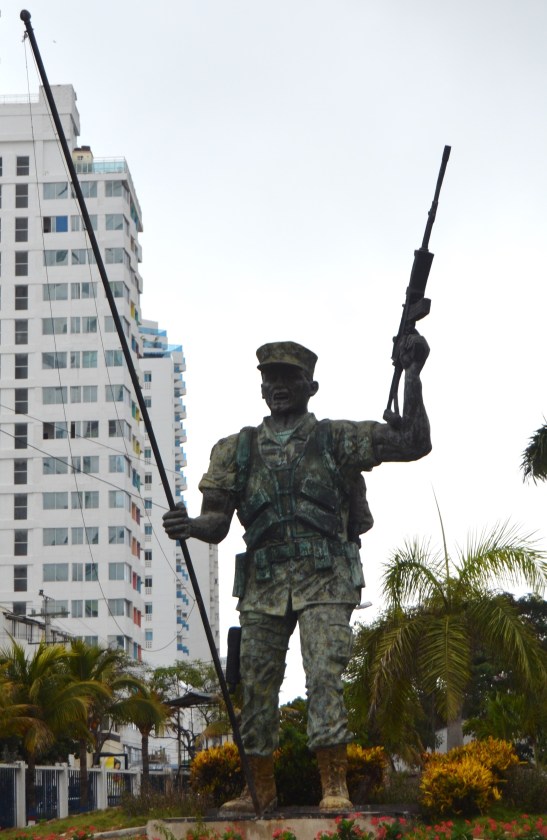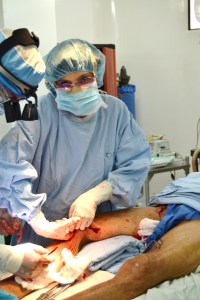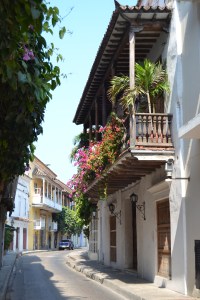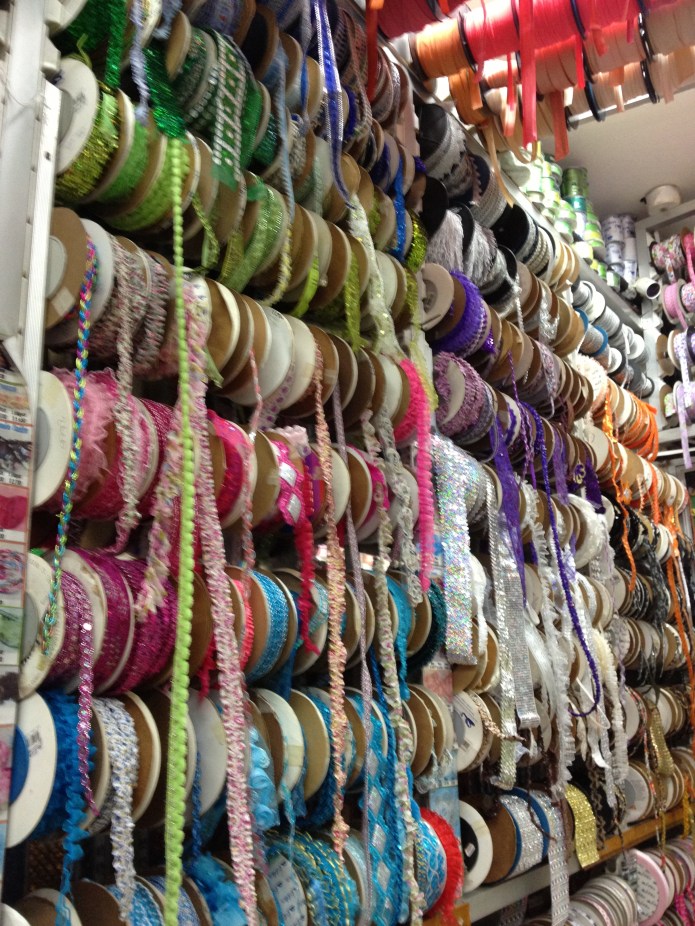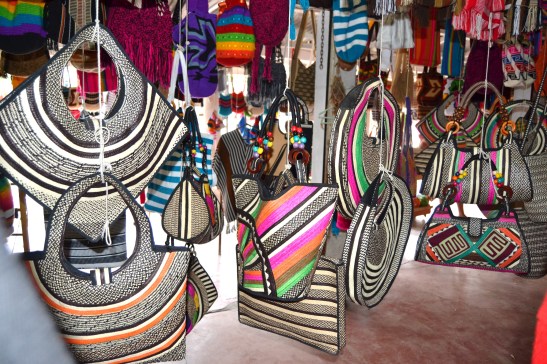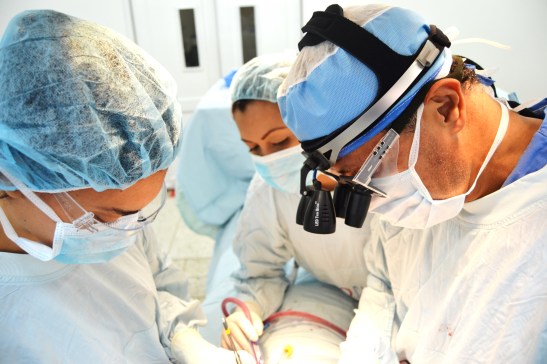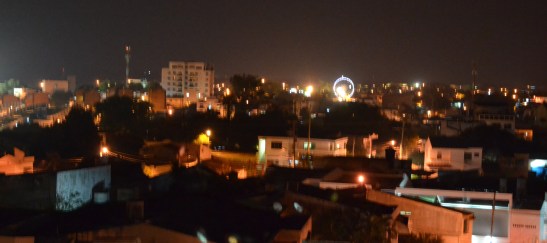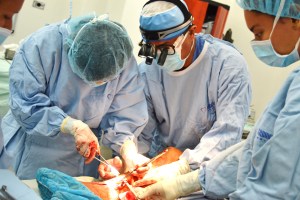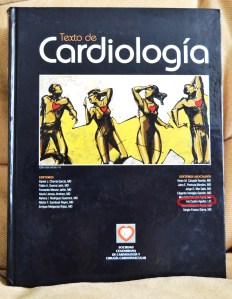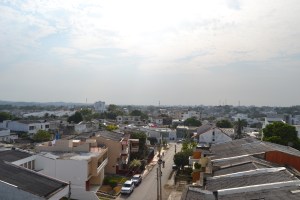
Sincelejo from the balcony
Since I have very limited wi-fi while in Sincelejo, I have been keeping a diary of my time on the cardiac surgery service of Dr. Cristian Barbosa. But then again, maybe I should explain why I am here.
I came to Colombia to learn how to perform skip harvesting saphenectomies with Dr. Barbosa. As I mentioned previously, we’ve kept in contact since we first met, and he was gracious enough to offer to teach me.
Before I ever left Virginia, it took a lot of paperwork and diplomacy, but we were able to secure administrative permissions for me to study sapheneous vein harvesting with Dr. Barbosa at the hospital in Sincelejo. While this isn’t medical tourism, I thought my readers might enjoy hearing about daily life as part of Dr. Barbosa’s cardiac surgery service.
Cardiac Surgery in Sucre, Colombia

outside the operating room
While the cardiac surgery program is located in Hospital Santa Maria, Dr. Barbosa and his team often travel to nearby hospitals and clinics to see new consultations. This program is the only program in the state of Sucre and patients come from all parts of the state.
Many of the patients come from tiny pueblos of a few hundred (or thousand people). Many others come from impoverished backgrounds. (Colombia has a tiered health care system with a national health care plan for people from lower socio-economic classes, kind of similar to the Medicaid concept.)
We arrive in Sincelejo on Monday, March 24th in the evening. We have a busy day tomorrow and the doctor wants to get started early (without facing the 3 hour drive in the morning.)
En Familia
In Sincelejo, we live en familia, in a large airy apartment with big windows that overlook much of Sincelejo. There are four of us here, the surgeon, the anesthesiologist (who is Director of the program), the perfusionist and myself. Iris and I share a large room with a private balcony. Meals are shared and we usually travel as a group to the hospital and on errands.
After our arrival Monday evening, the doctor, the perfusionist and I head to the largest grocery store and shopping center in town. We shop as a family, picking out fruit, arepa corn flour, coffee and other essentials. We then head to the food court. (They are treating me to Corral, due to my proclaimed love of Corral’s famed hamburgers).
It sounds like it could be uncomfortable – this domestic scene with my boss and the cardiac surgery team, but surprisingly it isn’t. Iris, the perfusionist (and my roommate both here and in Cartagena) always says they are a “cardiac surgery family,” and it feels that way – in a comforting, cozy way.
I joke and call Dr. Barbosa, “Papa” as he is the natural father figure of the group, and somehow it feels appropriate.

‘Papa’ of our cardiac surgery team
25 March 2014 – Tuesday
Today we travelled to Corozal to see two consultations in the intensive care unit. Then we returned to Sincelejo to see another patient at another hospital, Maria Reina. We eat lunch at the apartment, en familia . Afterwards, we go back to the office to see patients before heading off to surgery. (We had to delay surgery for several hours because the patient decided to eat breakfast. I guess s/he was hungry too).

Finally after this delay (to prevent anesthesia complications), we head to the operating room. There are the typical delays while the patient is being prepped and prepared. This gives me a chance to get to know the rest of the crew, Anita (the instrumentador or surgical tech) who runs the operating room table, Raquel, an experienced instrumentador who is training to work in the cardiac suite, and the two circulating nurses, Patricia and Estebes.
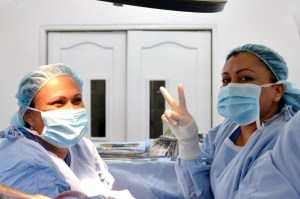
Raquel (right) and Anita, the instrumentadors
The circulating nurses are responsible for taking care of all the duties that fall outside of the sterile field, like fetching additional supplies, medications or instruments. They also control the environment by regulating the temperature, and adjust the electronic machinery (like the electrocautery unit, or the sternal saw) according to the surgeon’s immediate needs and specifications.
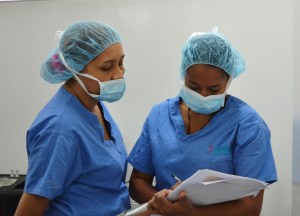
Patricia and Estebes, circulating nurses
Dr. Salgua is the medical doctor who works in the office, seeing patients and assessing their medical (nonsurgical needs.) For the last year, she has also worked as Dr. Barbosa’s First Assistant in Surgery. If there is any chance for friction in the operating room, most likely it will come from her. I am cautiously nice but optimistic when I realize she is fairly quiet, and not overly aggressive. (I relax, but just a bit. I am still nervous about how the team will take to me, even though the common Oops! “accidental” needle stick scenario seems unlikely here.

Dr. Salgua
Everyone is very friendly and welcoming and even before starting the actual surgery, I am breathing easier and starting to think that maybe I could belong here, with this group.
The surgery went well (valve replacement and annuloplasty). After the surgery, we transport the patient to the intensive care unit and give report to the doctors and nursing waiting to assume care of the patient.
Note: patient did well and went home on POD # 3 on 3/28/2014.
26 March 2014 – Wednesday
More surgery today, but still no coronaries (and thus no saphenectomies). It was a great day in the operating room – I closed the sternal incision.. (BTW, surgery went beautifully). I am already starting to feel more at home with the operating room staff, and I feel like they don’t mind having me around. Dr. Salgua has been very kind in assisting me during procedures, which is a relief. She still stays pretty quiet during the cases, but I think maybe sometimes she is a bit nervous too.

with the team
After transferring the patient to the ICU, our second visit to the patient from yesterday finds her over in the general surgery ward. (This morning she had been sitting up in a chair in the ICU when we arrived.) She looks good and states she is sore, but otherwise fine.

The cardiac catheterization lab calls; there are four cath films they want us to review, and patients to discuss regarding surgery. The patients themselves are resting in the recovery area after the cath procedure, so our administrative assistant, Paola makes appointments for each of them and instructs them to bring their families, medications and any questions.
The most interesting part of the cath lab is who is doing the caths. It’s a nurse, while the cardiologist sits behind the protective radiation shielded glass enclosure viewing the films and calling out for additional views. I wonder if the nurse knows that in the United States, a similar position would pay over 100,000 dollars. But this is one of the things that I see a lot of her in Colombia and in Mexico. Well trained nurses being essentially nurse practitioners (making diagnoses, treating disease, performing invasive procedures) but without the status or the compensation.
My roommate and I talk about this disparity sometimes. She’s a master’s trained nurse herself, so it makes for some very interesting discourse and insights. (She doesn’t like to have her picture taken, so I haven’t.)
We finish seeing patients and head home. The doctors head off for a siesta. Dr. Barbosa has been up since before five for his daily exercise before surgery.
As for me – after some scouting of the immediate areas around the hospital and the apartment, I went on my motorcycle tour. It was great fun but I got an important reminder of the perils of motorcycles just a few days later.
Note: After and uneventful surgery (defect repair), patient recuperated quickly, and was discharged 3/29/2014.
27 March 2014 – Thurday
The week is really flying by. I’ve been having fun with the operating room team. They are a great group. Everyone has been extremely nice and welcoming. (You can never be sure how your presence is going to be tolerated or change the existing dynamic.) Dr. Melano and I have a couple of animated discussions over current practices, literature and recent meta-analyses. It’s an enjoyable discourse even though my vocabulary often fails me. I hear myself making grammatic mistakes and repeated errors in Spanish but it seems with some much going on (reviewing my anatomy, practicing my suture ties, assisting in the operating room and trying to keep up on my writing )- I just can’t seem to remember as much as I should in Spanish. I inwardly cringe when I substitute ‘conocer’ for ‘saber’ yet again, but the word is out of my mouth in reply to a question before I can corect myself.
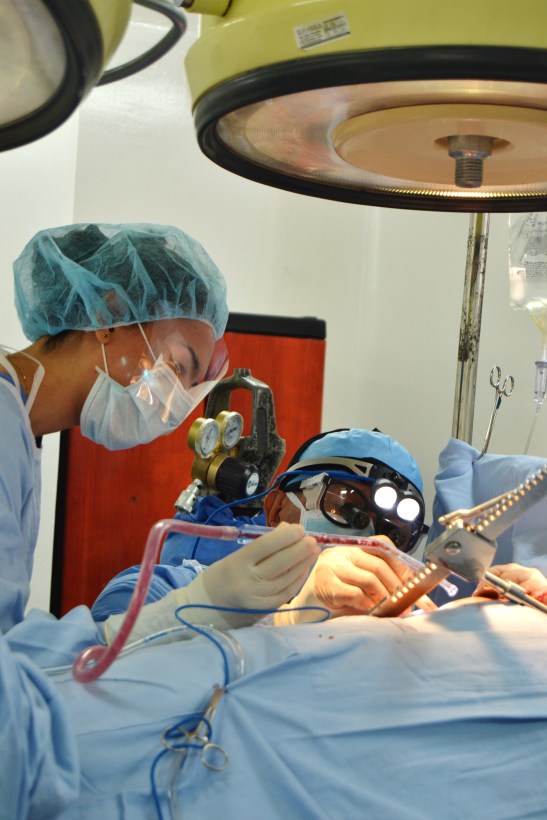
Dr. Salgua assists Dr. Barbosa
I sit out this surgery (still no coronaries) and spend some time taking pictures to document my experiences here. I got a couple of shots that I really like, including one of Dr. Barbosa, Dr. Salgua and Raquel.

one of my favorite pictures from that day
Note: Patient discharged home 3/29/2014.
28 March 2014 Friday (and coronaries!)
Today is my big day – and I am excited and a little scared too. I got up at five this morning and went with Dr. Barbosa to the exercise park, so I would have a place to walk while he played tennis. It helped me get ready for the day, and I got to see where Dr. Barbosa uses up all of his pent-up aggression. He turns it into a power slam. (I don’t know tennis terms, but whatever swing he was doing – it must be responsible for his tranquil overall demeanor.)
After breakfast, we head to the hospital. We check on our hospitalized patients before going to see today’s surgical patient in pre-op.
Our patient is a bit fragile-looking so (of course!) I worry about her and how she will do with surgery. I also worry that I might not sew straight, now that it’s time for me to get to work.
Some of my previous OR “lessons” have been brutal, including several at a troubled facility that sent me running away from cardiac surgery (of all kinds) for several months*. This is what fuels my anxiety. (I am not anxious by nature).
But here in Sucre, in this OR, this experience is nothing of the sort – Dr. Barbosa is an excellent teacher. I don’t know why it’s a surprise. He’s always been a bit of a Clark Kent of the operating room; pleasant, calm and methodical.** This is just the same. In his soft burring voice he goes over the procedure with Dr. Salgua and I. The he oversees our attempts, gently encouraging and coaxing. It is yet again, a comfortable experience, instead of a traumatizing, horrible one.

a pretty great teacher
I don’t have any pictures which would show my twinkling eyes which are the main indication of my happy grin beneath my mask as I finished closing the last leg incision.
We wrap the leg when we finish and move up to the ‘top’ of the operating room table. (I’ve learned that the top and the bottom of the operating room table are two very different places.)
I close the chest incision – surgery is over. We transfer the patient to the ICU. She remains a little fragile but has no immediate problems.
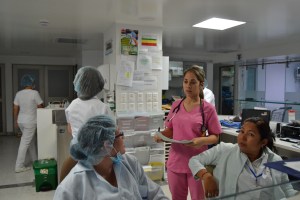
After making sure the patient is stable, the team heads over to Clinica Maria Reina. We have received a call that a trauma patient is being placed on ECMO (to support his lungs) after developing a fat embolism. We are standing by to help, as needed.
As I look around, and talk to the staff, I find that there are three patients in the small ICU, all young men in their twenties, all intubated with critical injuries, all due to motorcycle accidents. One patient, just barely an adult has lost a limb as well. He is awake and hitting the siderails with his remaining hand to capture the nurse’s attention. She holds his hand and speaks soft to him and he calms down. Watching this, along with the patient struggling to survive as doctors rush to connect ECMO is a sobering reminder of how devastating my joyride could have been.
The patient is connected to ECMO without incident. As a weary unit, all four of us return home.

The view from my private dance floor..
Everyone is exhausted – but I am exhilarated! I just want to dance – so I do, by myself, on the balcony with my phone blaring out some music. Later that evening, we go out for dinner to celebrate a successful week. I am still in a joyous dancing mood which probably drives my companions a little crazy but it’s been such a great day.. so when we return home, I dance some more.
March 29th, 2014 – Saturday
In the morning after my dancing spree – Dr. Barbosa and I walk down to the hospital. Our fragile patient from yesterday is doing okay, and our other two patients are ready to go home. I review discharge instructions with each patient, and hope that I am not mangling my Spanish too badly. But they seem to understand me, so maybe I am doing alright. The doctor is nearby, writing prescriptions, to clarify anything I have trouble explaining.
One patient asks about getting out of a chair without using his arms (and stressing the sternal incision) so I demonstrate my favorite technique, and together we practice.
After we finish, we head back to the apartment to eat breakfast, finish packing and head back to Cartagena. Dr. Melano is staying behind (along with Dr. Salgua, who lives in Sincelejo) to check on our remaining patient.
The ride back is pleasant, but I start to feel some of the fatigue from all of the excitement of the week. I also feel a little sad to be leaving our little cardiac ‘family’ for a few days, which is probably crazy considering how much time we’ve all spent together. I guess it’s because I know it’s just temporary.
Iris and I head back to ‘our’ Cartagena apartment where the neighborhood cat, Ximena is waiting for us.
Now we will relax, write and get ready for the return trip on Tuesday.
* A deliberate elbow to the face was just the beginning of a series of humiliations at a previous facility.
**Pulling on his superman cape when needed.
0.000000
0.000000









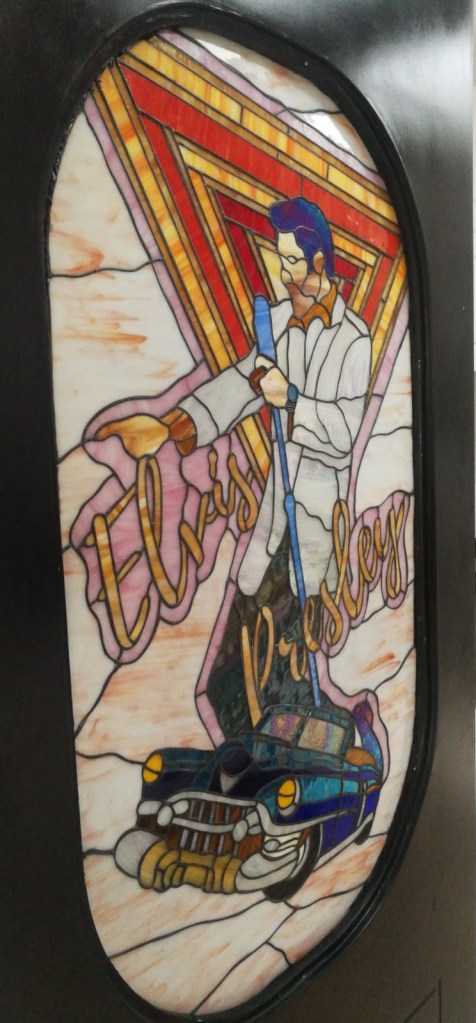


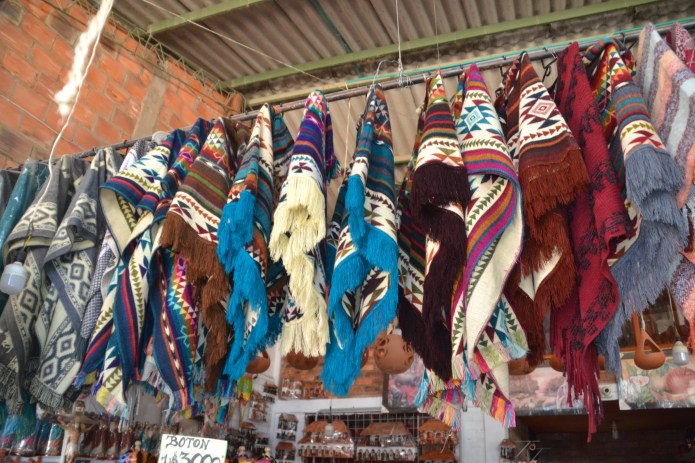











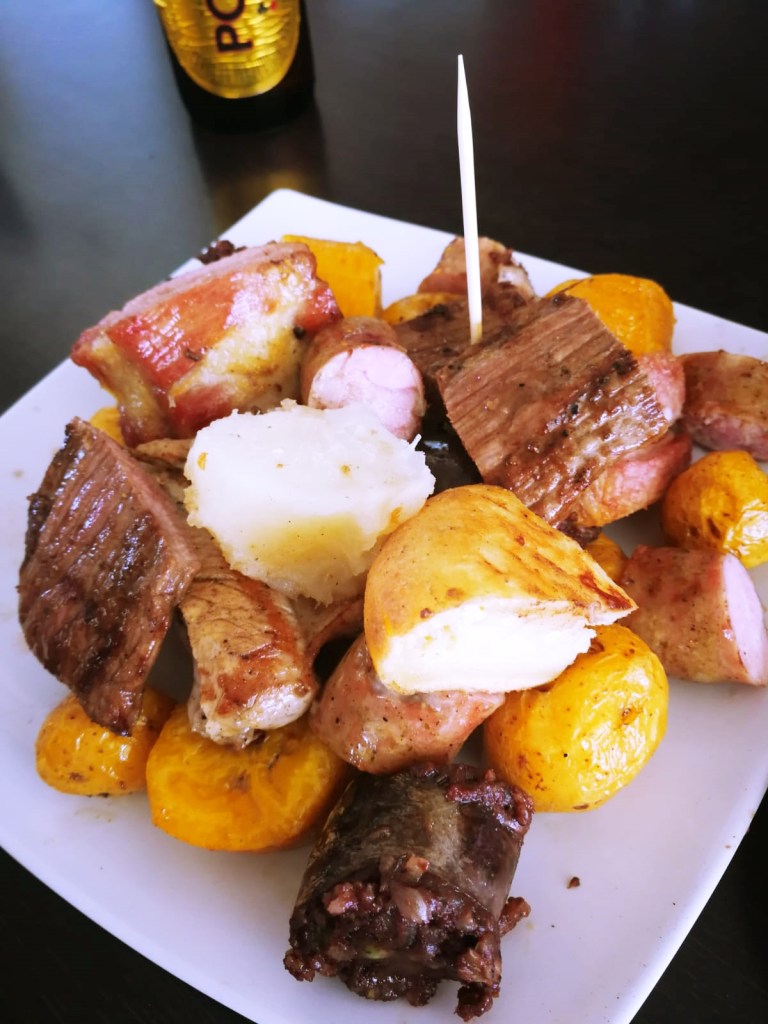
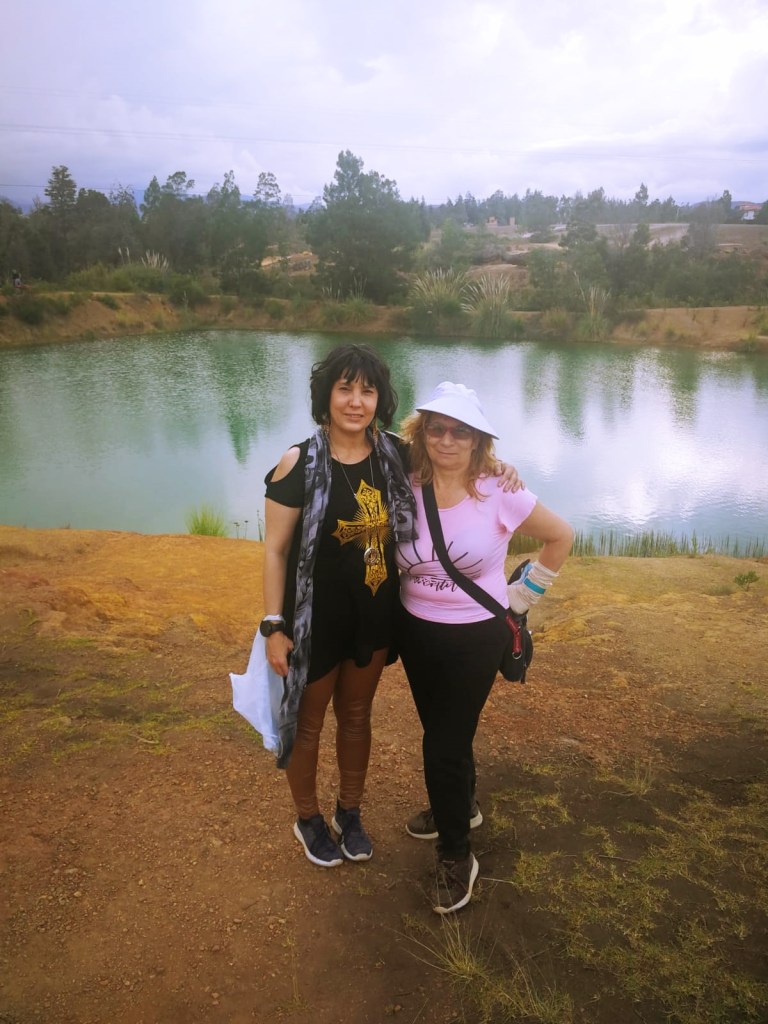
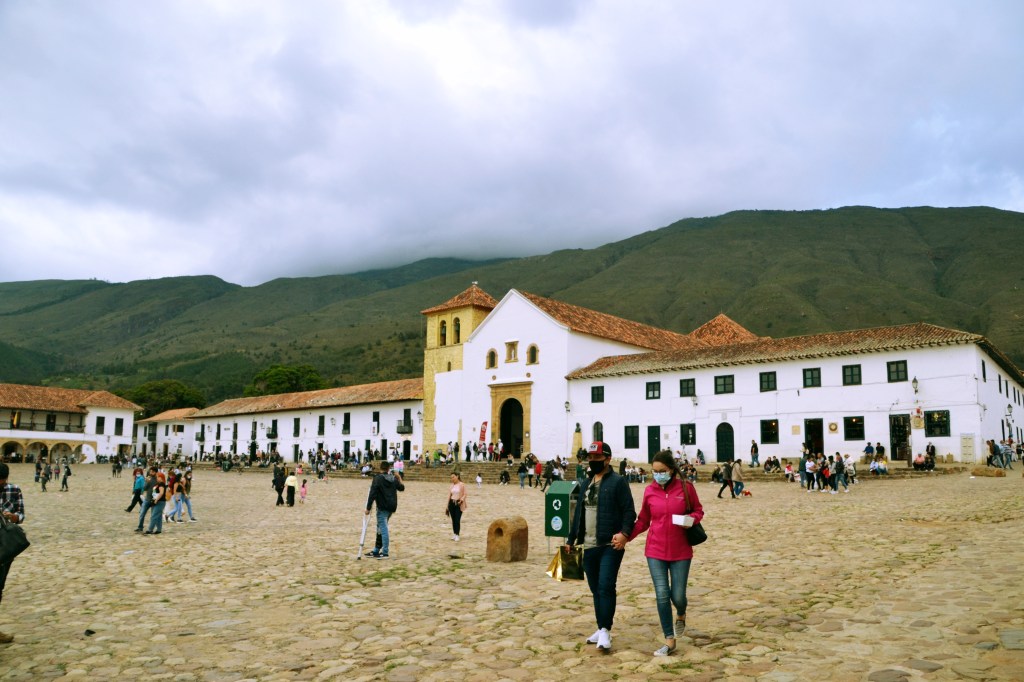











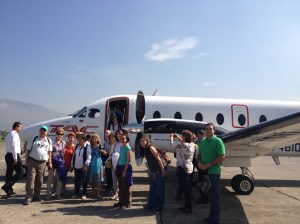
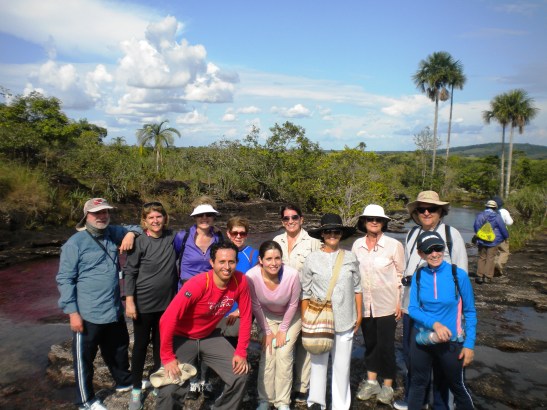

















































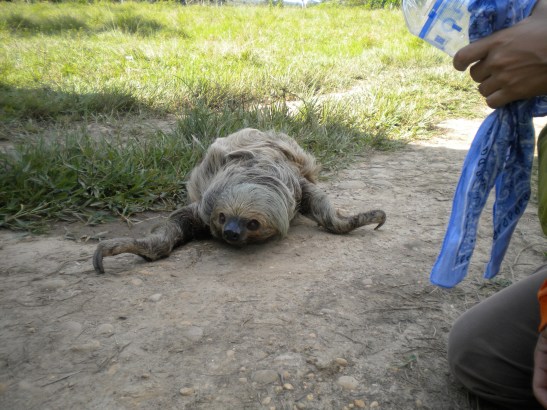




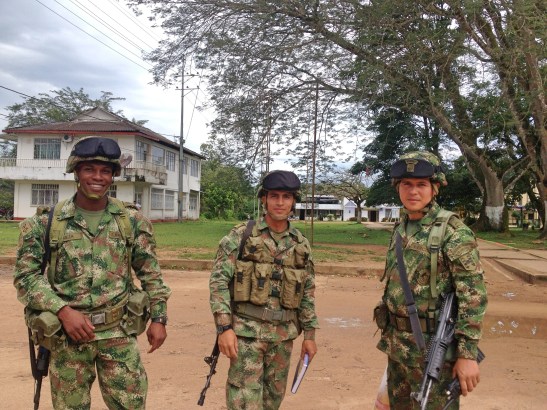















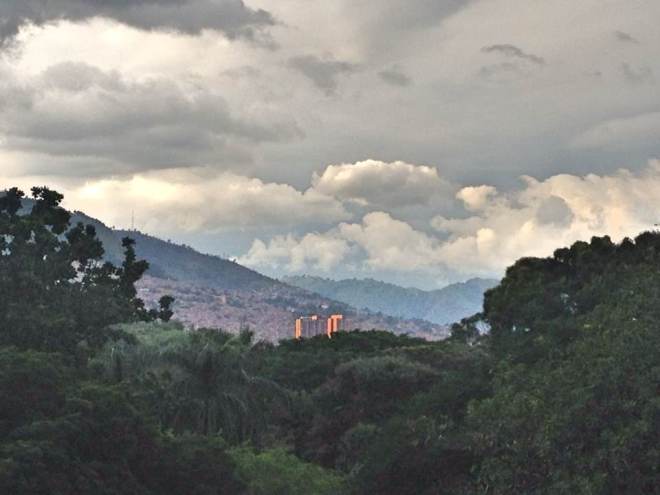












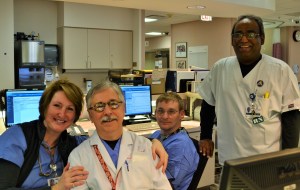
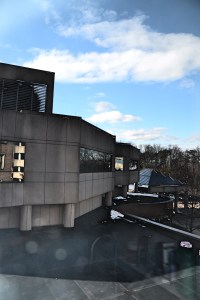
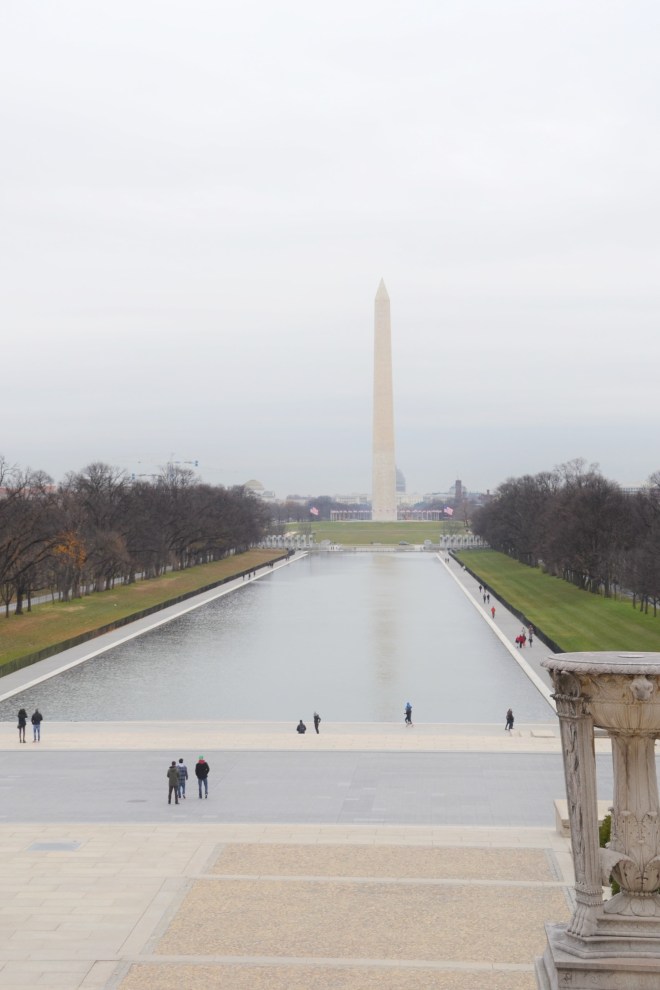















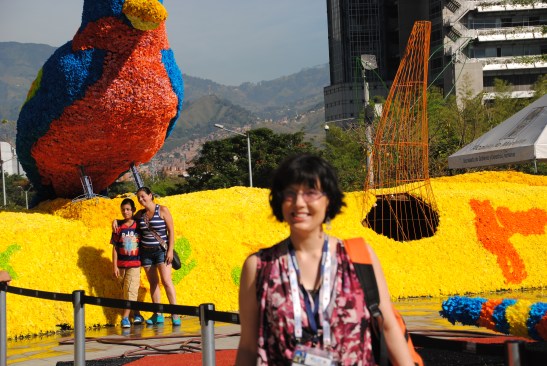









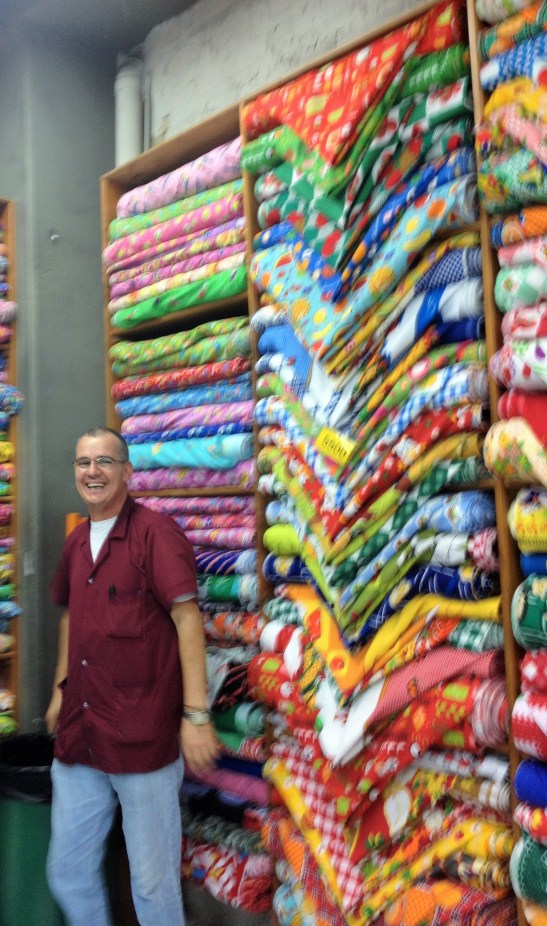









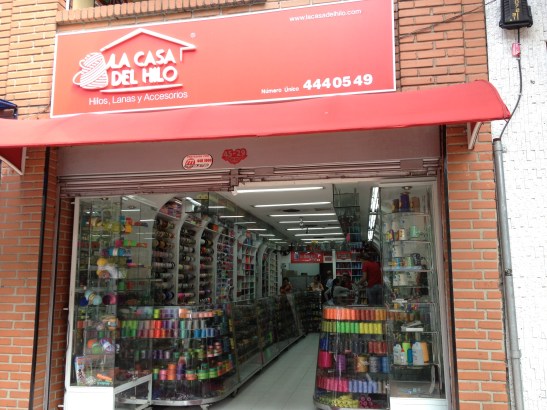




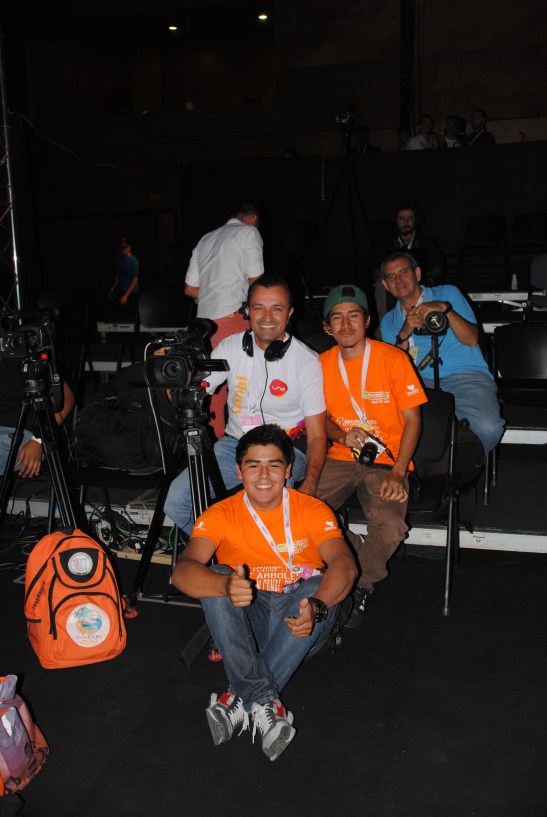
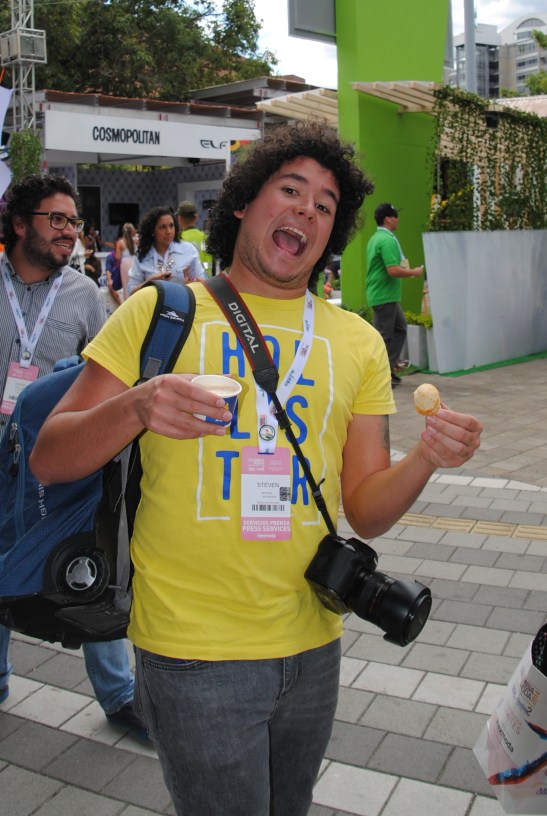

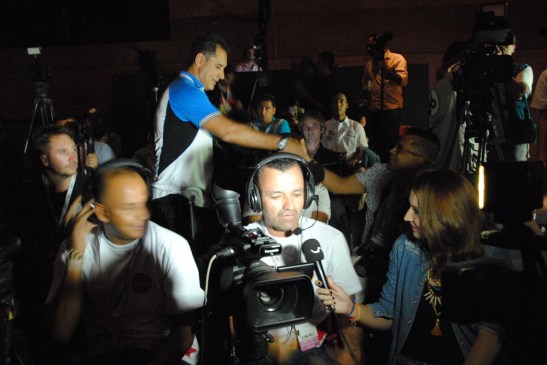





![IMG_1768[1]](https://colombianculture.com/wp-content/uploads/2014/07/img_17681.jpg?w=547)

![IMG_1780[1]](https://colombianculture.com/wp-content/uploads/2014/07/img_17801.jpg?w=547)





